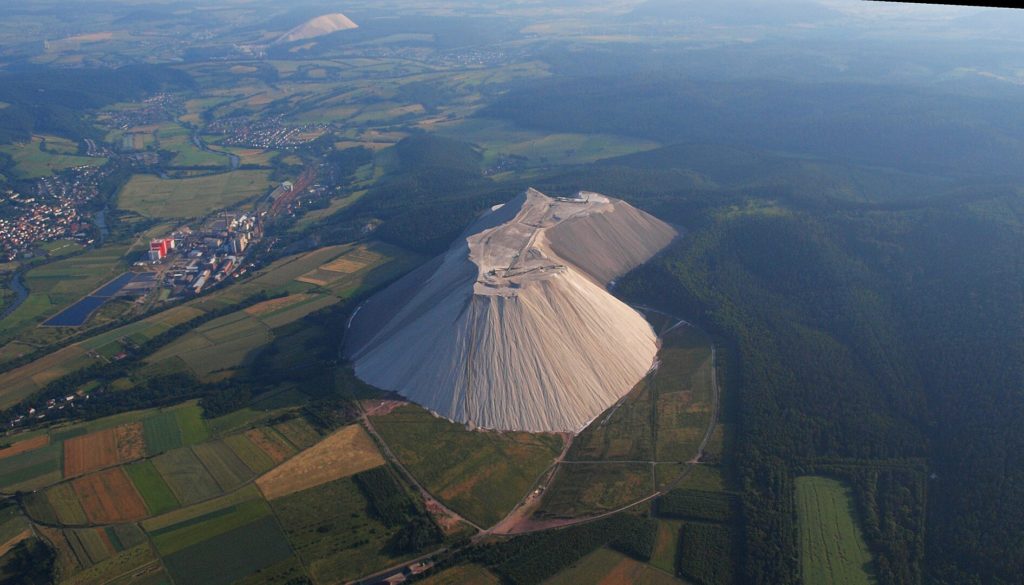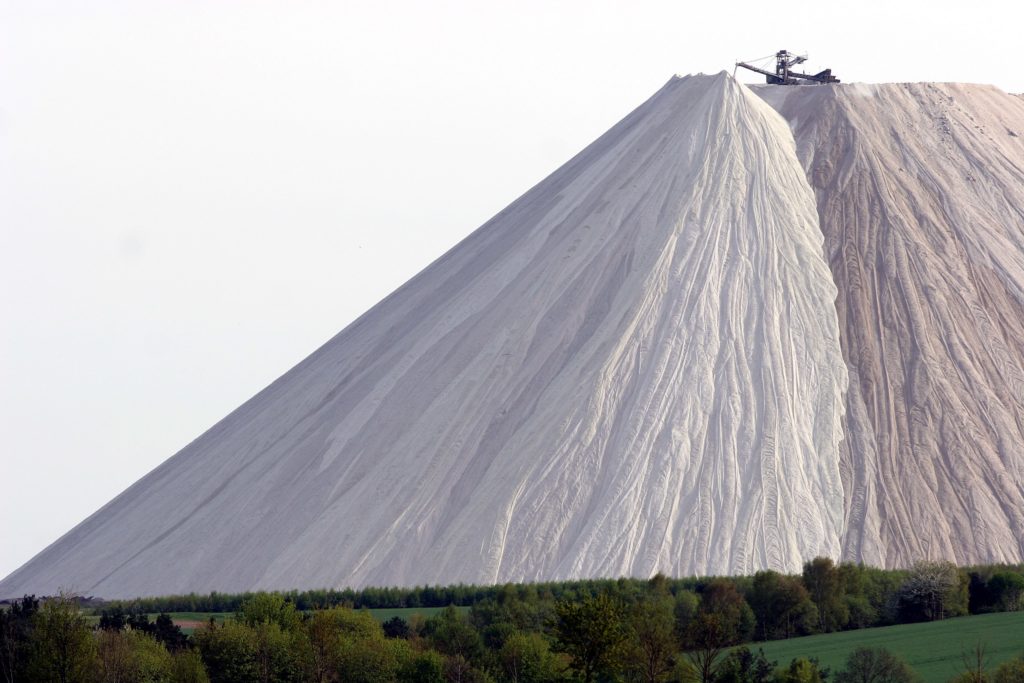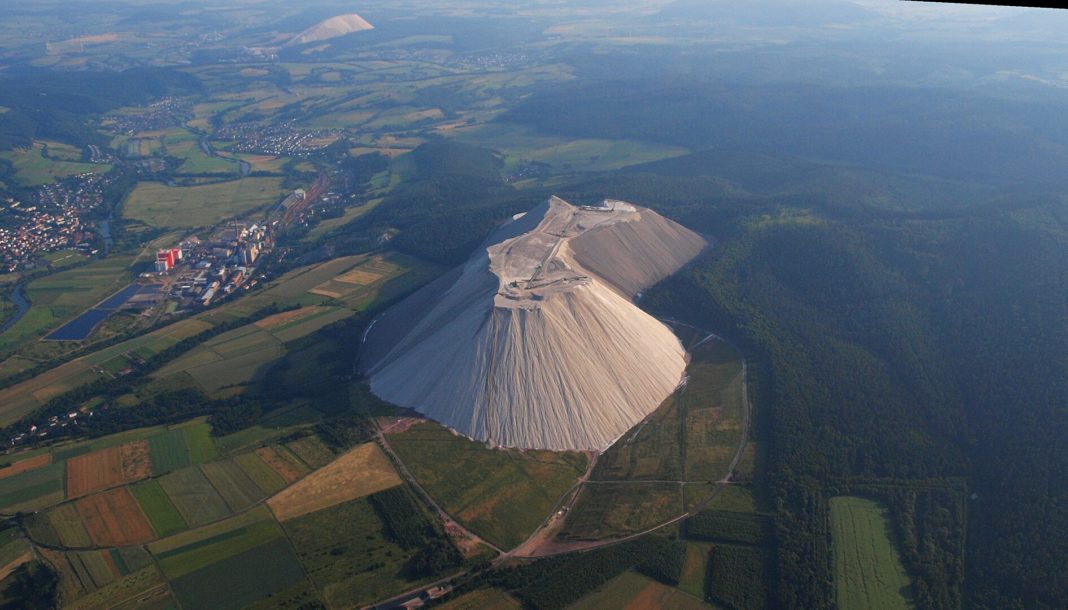The town of Herringen, in central Germany, is home to a heap of sodium chloride (table salt) so massive that it has come to be known as Monte Kali. It is the world’s largest artificial salt mountain.

The origin of Monte Kali can be traced back to the year 1976 when potash salt started being extracted from mines around the town of Hessen. Back then, potash was used to make products like soap and glass, but today it is an important ingredient in several fertilizers, synthetic rubber, and even some medicines, so extraction intensified over the last few decades. The problem with potash is that mining generates a lot of sodium chloride as a byproduct, so you need somewhere to store it. The company operating the mines started dumping all this salt a few miles from Herringen, and over the years it created a giant salt mountain locals named Monte Kali or Kilimanjaro (puns for Kalisalz, the German word for ‘potash’).

Monte Kali rises over 250 meters above the surrounding land, its summit reaching 520 meters above sea level. According to the Werra Potash Mining Museum in Heringen, Monte Kali, as of August 2016, it covered 98 hectares and contained approximately 201 million tons of salt, with another 900 tons being added every hour and 7.2 million tons a year.

According to the Internet














